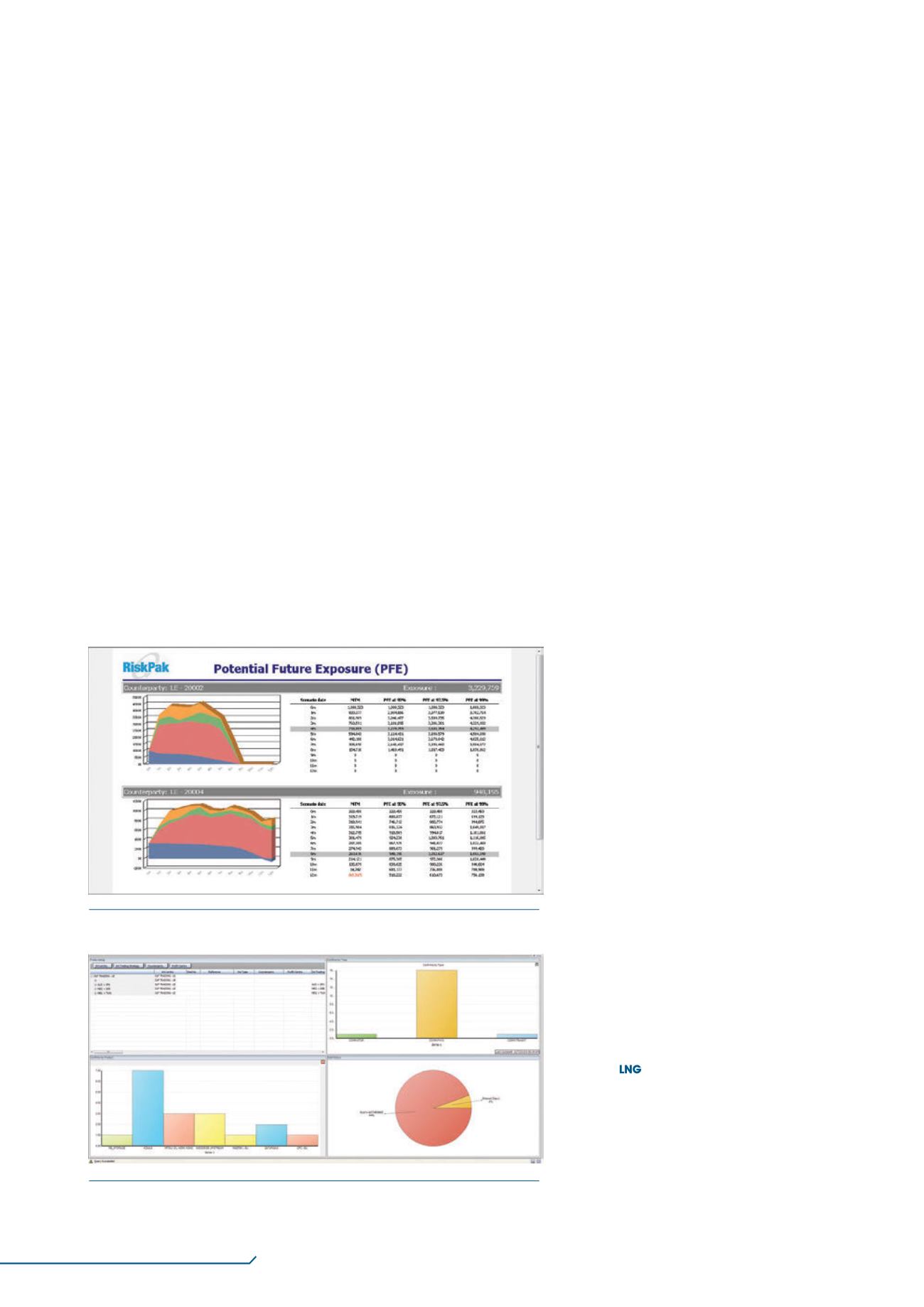
108
LNG
INDUSTRY
MARCH
2016
Tools of the trade
This new-model LNGmarket may offer a wealth of opportunities
to LNG traders, as well as significant challenges. Traders already
have to contend with a complicated trade lifecycle. Constantly
changing market prices need to be balanced with long-term
contractual obligations, plotted against the company’s annual
delivery programme (ADP) while accounting for costs associated
with liquefaction, heel and boil-off, as well as shipping and
regasification. Many large LNG players also have interlinked
operations in the gas and/or power markets, which presents
another set of prices and market changes to track.
For this reason, several LNG traders have invested in a CTRM
system to manage their risk exposures and gain an overview of
their contractual obligations and opportunities. Before
dispatching a vessel, all of these factors need to be weighed and
considered against each other to make sure the decision is
profitable and not excessively risky.
However, the new, more mature LNGmarket presents a new
set of challenges.
Mature market, mature
technology
In the past, traders could take their time to assess risks before
dispatching a vessel – once a decision was made on the voyage,
it did not need to be re-evaluated until the journey was complete
and the cargo unloaded. However, the maturing market presents
opportunities to redirect vessels and re-sell partial or whole
cargoes whilst in transit.
As such, traders require a CTRM system that is capable of
analysing new opportunities in real-time. This
means evaluating the price in the moment and
estimating the risk of it changing before the new
voyage is complete, as well as assessing the
change that a redirection might mean to a
vessel’s voyage path, boil-off, regasification and
storage at the new destination. This should be
done in the context of the company’s ADP and
its existing long-term contracts that must be
honoured. It is also important to consider
contract changes triggered by other market
participants.
A real-time CTRM systemwill be able to
analyse these factors and report in real-time on
the likely effects of profit and loss, credit and
currency exchange exposures. ‘What-if’ analysis
can then give direction on market value, credit
and trader limits.
CTRM is evolving to work in real-time, and is
becoming increasingly automated, allowing
human traders to make informed decisions more
quickly. For those that would look to take
advantage of the bright future for the LNG
market, the right technology for the times will be
essential.
Reference
1.
Medium-Term Gas Market Report 2015,
the
International Energy Agency (IEA), (2015),
/
pressreleases/2015/june/despite-decline-in-oil-
prices-natural-gas-demand-outlook-revised-
down.html
after a certain number of years, the modus operandi for LNG
business is overwhelmingly trading in long-term contracts.
However, in response to certain LNG buyers demanding
more flexibility, there are changes underway. Singapore, for
example, has embarked on an ambitious project of LNG
investment in an attempt to become a regional hub. In
August 2015, state-owned Singapore LNG (SLNG) signed a
contract for the expansion of its first LNG terminal with a
fourth storage tank – the largest in the world at 260 000 m
3
.
There are plans for up to seven tanks at this terminal and a
second terminal on the eastern part of the city-state is being
considered.
Crucially, this infrastructure is open-access, removing the
need for either the seller or the buyer to own capacity. As
such, any vessel can dock, discharge and make use of the
regasification facilities, or leave cargo for others to pick up
and transfer out again. Whether this move will be enough to
fundamentally change the market will depend on howmuch
storage is available to use in this manner. If Singapore is
successful in building as much as it intends, and the global
LNG glut continues, then it is unlikely that long-termmarkets
will take up all of the extra capacity.
Traders will be looking to the burgeoning LNG spot
market for opportunities. This spot market will grow in
response to the additional LNG on the market and the
increase in open access infrastructure. Traders will be able to
engage in redirection and will also be able to use the spot
market to hedge against risks taken on longer-term
contracts.
Figure 1.
Potential future exposure.
Figure 2.
Trade report dashboard.


